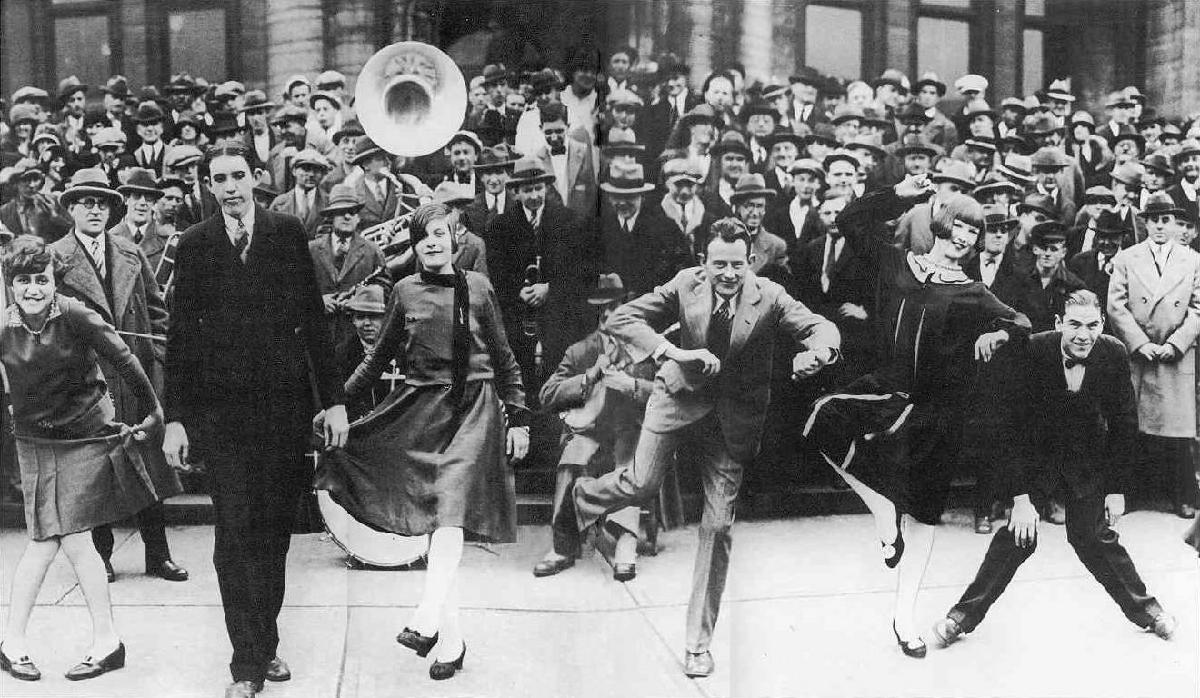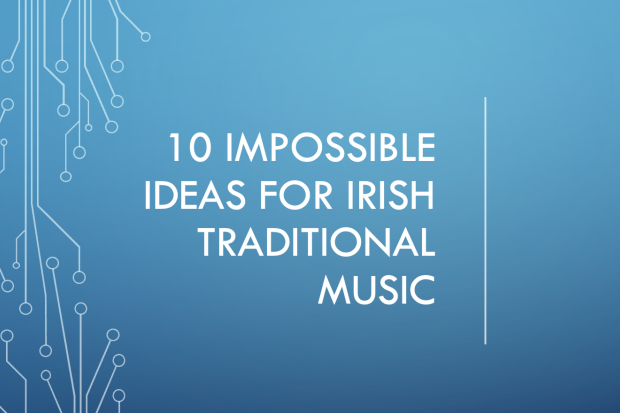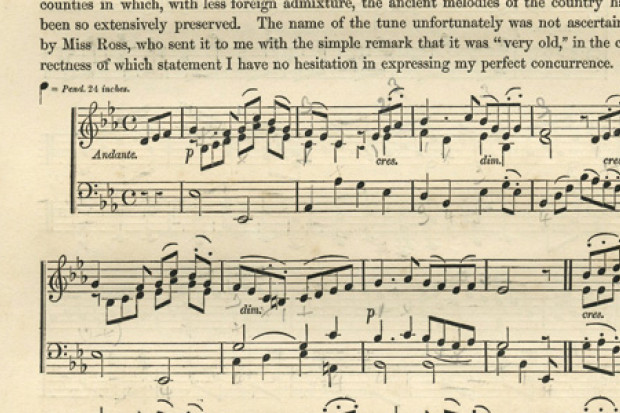
A Charleston competition in St Louis in 1925 (Image: Missouri History Museum).
Dark Side of the Boom: Music and the Generation Game
The demise of the recording industry has been greatly exaggerated. There is, however, a far bigger crisis looming behind it.
It has all happened before. Not only was there a catastrophic record crash in the twenties and thirties, it was part of a deeper social malaise that eventually ripped the world in two. The question has to be asked: was the recent music industry crash really a result of the internet, or was it self-inflicted, and in fact is symptomatic of something far more serious in our society?
To measure the extent to which history is repeating itself today, we must view the history of recorded music through a human time-scale – the generation, that conveyor belt of children, each batch with its own distinct culture forged by world events, new technology and dominant fashions. Even technological formats, from the first phonograph cylinder to the MP3, seem to change every 20 to 25 years.
The Baby Boomers
Look across today’s cultural landscape. Whether it’s music, cinema, television, radio, newspapers or book publishing, the same pattern emerges: old industries struggling to adapt to the digital age and all still dominated by that lucky generation born between 1945 and 1965, the Baby Boomers.
It’s no coincidence that the recent music industry crash coincided with this huge and wealthy generation reaching retirement age. In 1977, it was even predicted by Roland Gelatt, author of The Fabulous Phonograph, the first comprehensive study of the pre-war record business.
For twenty years the business had benefitted from an unnatural bulge in the nation’s demographics: a disproportionate percentage of the population had been of adolescent age… By the year 2000, a majority of the population would be over thirty, and no one could know what effect this would have on an industry that had tied its fortunes so closely to an expanding society of adolescents.
Now we know. But to understand the full influence of the Baby Boomers today, we need to step all the way back to the last hugely influential generation before them, their Victorian great-grandparents who, in the late 19th century, built the record industry.
Over a cliff
Every bit as revolutionary and socially progressive as their great-grandchildren, this remarkable generation also gave us the telephone, electric lighting, cars, planes, films, psychoanalysis and socialism. Thanks to the Gramophone disc, the musical privileges of the aristocracy could suddenly be enjoyed by all of society. ‘Future generations will be able to condense within the space of twenty minutes a [sonic] picture of a single lifetime,’ predicted its inventor, Emile Berliner, in 1888. With others, Berliner founded the first great record label, Victor Talking Machine, which went on to produce hundreds of millions of Enrico Caruso and John McCormack records throughout the early 1900s.
Alas, that great generation sleepwalked its youth over a cliff – as characterised by Irving Berlin’s 1911 transatlantic hit ‘Alexander’s Ragtime Band’. All year long, millions of Edwardians jubilantly tapped their feet and sang about this imaginary brass band so good ‘you want to go to war’!
The horrors of the Great War changed everything. ‘A whole generation looked bitterly and scornfully at their fathers,’ observed Austrian writer, Stefan Zweig. ‘None of these young people believed their parents, the politicians or their teachers. The post-war generation emancipated itself, with a sudden, violent reaction, from all that had previously been accepted.’
A lost generation
The youth’s rejection of European high culture was immediate in music. As young women craved danceable music, jazz hit the New York and Chicago dancehalls in the summer of 1917 and began spreading like wildfire. But to the classically trained music directors of the Gramophone companies, the three-chord structures and warbling blue notes of early Dixieland jazz sounded like musical illiteracy. It was the same for book publishers, suddenly swamped with modernist manuscripts proudly employing incoherent syntax and abbreviated slang that Zweig described as ‘telegram speech’.
The rise of sexually liberated flappers may have been welcomed by young men, but the unemployment and political extremism stirring through this ‘Lost Generation’ formed the battle lines of what was still to come, especially in continental Europe, where millions of poor, disoriented youngsters were being sucked into the black holes of Bolshevism and fascism. Ernest Hemingway popularised the ‘Lost Generation’ term from a street scene described to him by Gertrude Stein, a poet friend who also lived in Paris. While getting her car fixed, Stein overheard the garage owner berating a clueless mechanic for his bad work: ‘All you young people who served in the war. You are a lost generation…’
But it was new technology that truly ripped a fault line between the generations. Driven by a wave of teenagers, radio exploded in 1922, unleashing a chaotic, unregulated Wild West of free music that sent the hitherto booming Gramophone industry tumbling into recession. Blindsided by millions of kids clogging the airwaves, the grey-haired Gramophone moguls wasted critical years demanding its ageing opera stars boycott radio stations.
Unperturbed, radio hardware became the single biggest boom industry of the twenties, transforming the world with instantaneous news, political debates, comedy, live boxing matches, children’s stories and, of course, free music. Record sales continued plummeting until the Wall Street Crash of 1929 shook the record industry’s very foundations. Between 1927 and 1930 alone, America’s already shrunken output was decimated to just 10 million records. By 1933, it had slid to a tragic six million, a 95% wipe out in both hardware and record sales. Even in the Great Depression, no other industry suffered quite like the record business.
Parallels
The parallels of that first crash with the recent one are almost eerie. Curiously, in the course of my research for Cowboys and Indies – The Epic History of Record Industry, none of the rock-label founders I interviewed knew that radio had killed the Gramophone star. That first crash had been completely forgotten. The other big surprise was that few of them really blamed internet piracy for the recent crash. Instead, they lamented a cultural demise and corporate cynicism throughout the nineties, as the golden age of the Baby Boomers came to an end, that, as producer Rick Rubin put it, ‘lead to a revolt’.
For those on the inside, it all started going wrong in the eighties as the compact disc doubled prices and eventually killed the single format, meaning that if people liked a song, they had to buy a £15 album. A complacency set in amongst the major labels who all carried vast back catalogues. About 40% of their turnover was being generated simply from people rebuying their favourite albums on CD. Like a perfect storm, this unprecedented cash bonanza coincided with the rise of a Mafia-affiliated network of radio pluggers who, since the late seventies, had skillfully taken control of American Top 40 radio, charging labels upwards of $100,000 just to get a single into nationwide airplay rotation. This extortionist payola system, compounded by the huge costs of making videos for MTV, left the smaller independent labels unable to compete. One by one in the late eighties and early nineties, many iconic imprints sold out: Motown, Island, A&M, Chrysalis, Virgin, Tommy Boy, Sub Pop, Creation, MCA, Geffen, Def Jam and others, all gobbled up by the hardware and media conglomerates who also bought out the majors.
In real terms, many of the musically literate indie founders, who had driven the golden age of pop music since the sixties, left the business – extremely rich, but all experiencing grave regrets in retirement. In their absence, pop music became a concentrated factory industry of trademarks and catalogues managed by lawyers, accountants and MBA graduates. First came Brit Pop and gangster rap, then in the late nineties came a billion-dollar wave of boy bands, girl bands and talent shows – all hugely profitable formats marketed to young children.
By the time Napster arrived in 1999, the music industry was already terminally sick. Seven years of mass piracy and shrinking sales, followed by Lehman Brothers and the Great Recession, signed the death certificate of the CD industry. Like the canary in the coal mine, the music industry had collapsed just before Wall Street, twice in one century.
Recovery
So how did the collapsed Gramophone industry of the Great Depression recover from its near-death experience? It began with the radio and record worlds coming together. In 1925, record labels ended their pointless boycotts and even adopted a new system of ‘electrical recording’ using vacuum tube amplifiers, borrowed from radio technology. In the same year, America’s biggest radio giant, RCA, bought out Victor. Also, following the end of Prohibition in 1933, Wurlitzer launched a line of jukeboxes, which by 1937 were consuming 13 millions records in bars across America. Meanwhile, as the booming radio broadcasting industry enjoyed rising advertising revenues, the composers’ union, ASCAP, lobbied for airplay royalties, creating a vital new income stream for music publishers and composers.
But these were minor improvements in an otherwise broken, demoralised market. Those who stuck around simply scraped through on empty bellies and their love for music. We should all take careful note that Billie Holiday’s early swing classics barely sold 5,000 copies a piece. Both she and her musicians accepted minimum fees of about $20 per session. Records were just calling cards, performing live was the only way a working musician could get by. However, thanks to airplay royalties, the radio age gave music publishing a new importance, and why the twenties and thirties spawned so many songwriting stars.
Sensing the worst is over
Today’s post-crash marketplace is remarkably similar to this barely visible tide change in the late thirties. Those who’ve stuck around are struggling, but, sensing the worst is over, have begun to look forward, positive that, at the very least, the crash flushed out a lot of tone-deaf businessmen. Today’s survivors are purists, mostly indies, doing it for the music. Meanwhile, on the other side of the battlefield, the IT giants have, for the most part, stopped treating record labels with disdain, much like the maturing radio corporations of the thirties realised their radio stations needed a constant supply of hot music to satisfy their growing audiences.
Like Apple did with its hugely successful iTunes Store, Spotify has adopted a producer-friendly philosophy, albeit with a subscription-based streaming service. Many have criticised the paltry royalties Spotify is paying, but it’s growing, and, relative to its size, is more generous than its super-rich competitors. In contrast, YouTube, or more precisely its Google owners, have been far slower to understand the mutual benefits of a healthy record industry, continuing instead to condescend record labels for not adapting to the future – their low pay, ad-filled future, that is. When it comes to music, Google would be wise to learn from history: the biggest and most arrogant of the radio corporations, RCA, was overtaken by a smaller music-focused competitor, CBS. The music-buying public, in the end, gravitates to wherever the magic is happening.
And what can music professionals do to sow the seeds of recovery? To exert more negotiation leverage on the IT giants, artists should formally join the indie community through organisations like AIM (Association of Independent Music) and Merlin, which represents the rights of independent labels. In addition, promoters, music media and DJs must try and influence the likes of Apple and Spotify who are expanding but remain artistically limited. Above all, we must return to A&R, making a real effort to find and support genuine talent that can bring honour back to the music business.
Hearing music like never before
Ultimately, what brought the Gramophone industry back from the dead was World War II – another senseless bloodbath caused of course by the Lost Generation’s most famous member, Adolf Hitler. The seeds of recovery had been sown in the late thirties, but during wartime, sales for the supposedly obsolete disc soared to levels unseen in two decades. In this human tragedy, people began hearing music like never before. Separated from husbands and sons, the civilian population, and especially women, craved records like treasured letters or prayers. Wartime hits like Vera Lynn’s ‘We’ll Meet Again’, Glenn Miller’s ‘Moonlight Serenade’ and Billie Holiday’s ‘Lover Man’ document the uncertainty and longing people were feeling. The biggest-selling single of all time was a wartime hymn, ‘White Christmas’ by Bing Crosby, the very individual who was said to have done most to lift G.I. morale.
The young men and women who won World War II were duly named the Great Generation. They had grown up in the Depression, defeated fascism and built a durable peace with Marshall Aid and the United Nations. Austere and selfless, they celebrated their unfamiliar prosperity by having lots of Baby Boomer children. Fittingly, rock ‘n’ roll, a mish-mash of the jazz, blues and hillbilly folk that was first recorded by penniless pioneers in the twenties and thirties, would fuel that Post-War spirit of optimism and reconstruction.
But that was then. Today, we are stuck in our own interminable Great Recession – the new legacy of the Baby Boomers – and, considering the depth of intergenerational inequality, we should reasonably expect another major crisis to erupt. The so-called Generation X, born between 1965 and 1980, got crippled by personal debt in the same period – largely from buying overpriced houses from Baby Boomers. Below them, Generation Y – born between 1980 and 2000, the new lost generation raised on rigged talent shows, now enters adulthood with unemployment levels as extreme as 50% in the most disadvantaged areas all over Europe and America. With so little wealth and employment in the younger half of society, the trillion-dollar cost of pensions and healthcare for Baby Boomers looks set to bankrupt the West, whatever that term now means. This is intergenerational breakdown on a scale not seen since the aftermath of World War I, and arguably worse.
So, the next time you hear a demoralised musician, producer or journalist moaning that music is dead, killed by the internet, please send them this message. The demise of culture is a self-fulfilling prophesy. Now, just like the music community of the Great Depression, we must keep the faith and clean up our temple, because chances are a mighty storm’s a-comin’. Millions of people, not least the next generation, are going to need potent soul medicine if the times are ever going to get better.
Published on 1 April 2015
Gareth Murphy is author of Cowboys and Indies – The Epic History of the Record Industry. For his music business articles in the UK press, he won Writer of the Year at the 2017 PPA Independent Publisher Awards. He ghostwrote Siren Song, Sire Records founder Seymour Stein’s official autobiography, and lives in Paris.















